
A Look Back 100 Years
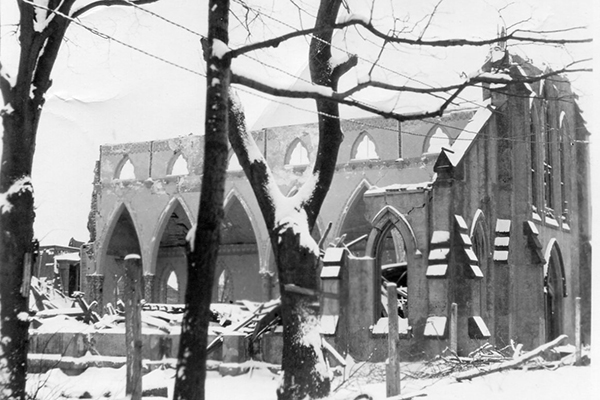 On the morning of Dec. 6, 1917, the outgoing Norwegian relief vessel Imo collided with the incoming munitions vessel the Mont-Blanc in the Halifax harbour. The Mont-Blanc, with its cargo of benzol, picric acid, TNT and gun cotton, caught fire. After burning for 20 minutes, the volatile cargo exploded, causing a blast unsurpassed in human history until the bombing of Hiroshima in 1945.
On the morning of Dec. 6, 1917, the outgoing Norwegian relief vessel Imo collided with the incoming munitions vessel the Mont-Blanc in the Halifax harbour. The Mont-Blanc, with its cargo of benzol, picric acid, TNT and gun cotton, caught fire. After burning for 20 minutes, the volatile cargo exploded, causing a blast unsurpassed in human history until the bombing of Hiroshima in 1945.
Halifax was devastated. Approximately 2000 people were killed in the explosion or died shortly thereafter from their injuries. About 9000 people sustained injuries. Partial or total loss of sight was widespread, as the windows to which people had been drawn to watch the fire blew inward, sending shards of glass into faces and eyes. The records of St. Joseph’s Orphanage show a sharp increase in admissions and hundreds of children were left completely orphaned or with only one living parent. Many Archdiocesan properties were affected, including St. Joseph’s Church, which was destroyed. St. Mary’s Cathedral, further away from the explosion, fared better, though a bell was cracked and the stained glass windows shattered.
As we mark the 100th Anniversary of the Explosion, we present a few items of interest, drawn from the Archival holdings of the Archdiocese of Halifax-Yarmouth, and other sources.
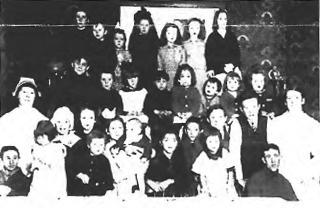 |
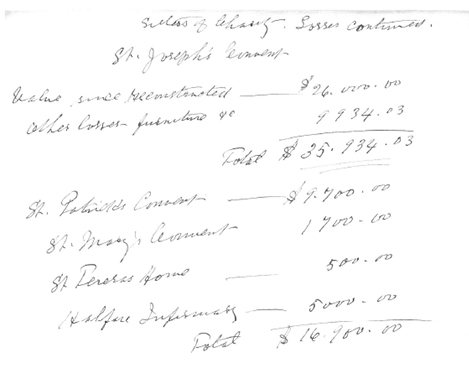 |
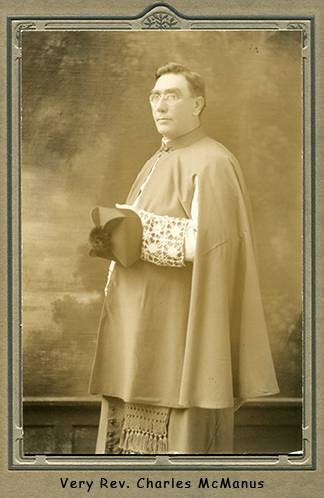 |
|||
|
Knights of Columbus Halifax Council 1097 and Dec 6, 1917 Explosion (pdf) Knight Ervin John Doak was kind enough to share some of the results of his research into the involvement of the Knights of Columbus in recovery efforts following with the explosion. Many thanks to Mr. Doak! |
†McCarthy-Damages list (pdf) This list, in Archbishop McCarthy’s handwriting, shows the estimated dollar value of the damage to Archdiocesan properties. According to an online inflation calculator (in Canadian dollars) $1000 in 1917 would equal roughly $15,700 today. The damages in 1917 totalled over $2,300,000. That amount would total over $36,134,939.76 today. |
Sermon (pdf) What follows is the homily preached at the funeral of Msgr. Charles McManus, at St. Mary’s Cathedral on January 18, 1940 by Rev. Dr. Charles Curran. Rector of St. Mary’s Cathedral when he died, Fr. McManus had been the pastor of St. Joseph’s Church on the day of the Halifax Explosion. He worked tirelessly to minister to the dying and injured in the immediate wake of the explosion, and to his devastated congregation in the weeks, and months that followed. This homily speaks of that experience. |

What follows is transcribed from the handwritten original on Oct. 11, 2017, by Sharon Riel, Archivist, for the Archdiocese of Halifax-Yarmouth.
The original is not signed, but was found in a box of archival material regarding St. Joseph’s Church, with a newspaper clipping from the Halifax Mail-Star, dated Dec. 7, 1968. The article is entitled “Explosion Survivor Looks Back to 1917” Details in the clipping agree with the handwritten account, suggesting that the memoir was written by Mrs. Delphine Pulley, and delivered in an address to a memorial gathering that took place on Dec. 6, 1968 at St. Joseph’s School,
on the 51st anniversary of the Halifax explosion.
Read newspaper clipping "Explosion Survivor Looks Back to 1917"
The notes are written in black felt tip pen, which changes part way through to a thicker felt tip pen. The transcription text will shift to bold to indicate where this change happens. Notes written in the margins will be added (in italics, in parenthesis) after the paragraph beside which the note is written. The page numbers given in the original document are indicated by the numeral in parenthesis, thus (#.) An un-numbered page, entitled “Insert” is almost certainly mis-ordered, as it disrupts a narrative.
It has been indicated by an asterisk* at the beginning and end of that text.
Memories of December 6, 1917
I have been asked to give some personal memories of this fateful day of fifty one years ago.
It is a privilege to have been asked to do this as I realize that the last year (1967) Dr. Fergusson of the Provincial Archives gave a detailed account of this fearsome explosion. So with apologies for me descriptions as compared to his, I shall try to tell you some experiences.
A year or so previous to the Halifax Explosion the Boys’ School which was located on Young Street had burned down. A new building named after the Supervisor of Schools, Mr. Alexander McKay was going up on the corner of Russell and Gottingen Streets. In face it was almost ready for use. While the boys were without a school they were on part time with (2) the girls in St. Joseph’s School. On the morning of December 6th it was the girls’ turn to be in the school. The boys therefore were at home or out watching the fire on the Mont Blanc. (Boys’ school Principal Mr. D.H. Matteson)
St. Joseph’s School at the time of the disaster was in very fine condition. There were grades from one to eight inclusive. (9 classes in all) The rooms and Assembly Hall were very attractive. Many beautiful plants, four Parisian statues, three pianos and numerous pictures from the best artists contributed to the beauty and usefulness of the school.
On the second floor were the 6th, 7th, and 8th grade classrooms as well as the Grade One class in the Assembly Hall.
On the first floor were the 2nd, 3rd, 4th and 5th grades.
In the basement was another Grade 1 class.
(3) Thursday, December 6th, 1917 was a find, clear day. At approximately 9:05 400 pupils were seated in their classrooms. (I remember we had just finished morning prayers.) The roll call was destined never to be made.
Why not? At the foot of the hill in the harbour were two vessels, one of which contained the fatal cargo that was to bring death and devastation to hundreds of people in the north end of Halifax.
No one knew that anything extraordinary was about to happen – although a fire on one of the ships had been causing crowds to gather to watch it for some minutes.
A low murmuring sound was heard. Then a frightful crash, the ripping of beams and woodwork, crumbling of stairs, shattering of glass, statues and other movable articles and St. Joseph’s School was in ruins.
(4) The attic and roof had caved in on the 8th grade room pinning the teacher Sister Mary Cecilia to her platform which with the floor descending to the Grade 2 room below, bringing death to two little children. Many 8th grade pupils made their escape through the windows on the ground floor. Sister was extricated and not seriously injured.
In Grade 7 the teacher was knocked unconscious by the force of the shock and covered with debris. Sister (Agnes Gerald) managed to free herself and spent time helping those who had been taken to the yard and who needed attention. One girl in Grade 7 was killed.
The roof was blown off the Grade 6 classroom and part of it was found in the next street. One child was killed, many were deeply cut. (Sr. Ethelred)
(5)The Assembly Hall was shattered. The little ones had not yet come up from the basement. So they were saved. (Sr. Edwina)
In Grade 2 the two little girls already mentioned were killed. Sister Rita herself was temporarily blinded by blood from the wounds she had received. She was in danger of losing both eyes. She called her class to her. They were helped through the windows. Sister herself was led out of the room.
The children of Grade 3 climbed over the debris made by the falling staircase made their escape through the front door. Sister Frances’ wrist was broken. (Sr. Frances)
The 4th grade teacher was Sister Cecilia Lawrence. Sister came back twice afterwards to be Principal of St. Joseph’s and died only last year. She had a broken (6) leg. She crawled to the hall and was carried to the yard. No girls were killed in that class.
Grade 5, taught by Sister John Baptist escaped though many were badly cut.
The other Grade I class had severe injuries and one little girl died from wounds a few hours after. (Sr. Beatrix)
In spite of the ruin of the school things were organized. I remember being escorted home by a senior girl.
Five minutes has wrought terrible havoc. The homes of the pupils had been wiped out. There were many sad scenes of parents looking for their children. There (7) were many children who would never find their parents.
The Convent was quite demolished. None of the Sisters were seriously injured and taken to the hospital. The rest remained till dusk helping people. Then they walked to Mount St. Vincent, hoping to find shelter for the night.
(8) I remember the experience of my own father. He was walking thru [sic] the field were Richmond School now stands enroute to the tram car at Duffus and Barrington Sts. He was lifted in the air. When he landed he got up & ran home to see how things were there.
*Insert
I wish to thank Sister Superior of St. Joseph’s Convent for making available to me some material from the Convent Archives.
I also wish to thank my husband for researching this poem for me from the Halifax Memorial Library. *
(9) When next he saw that field it was covered with plate from the ship which had been blown high in the air and landed after he left the area – a miraculous escape.
I wish to conclude my thoughts with a verse written by the Principal of Alexander McKay School, (10) at the time of the explosion – Mr. D.H. Matheson.
Read the poem.
(The poem is not named, or included. It is very likely a poem called “December 6, 1917,” included in a volume called “Elegy of Richmond: and other poems” held within the non-circulating stacks at the Halifax Public Library.)
Halifax Explosion victims buried in our cemeteries.
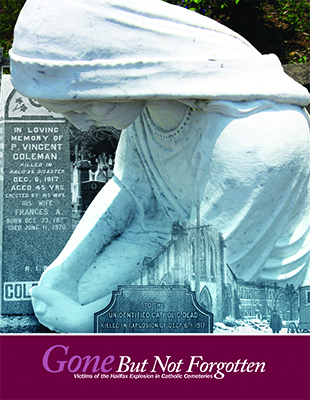
CTV video clip about Our new book "Gone But Not Forgotten" and some stories of the victims.
Click here to view story.
Archives Contact
Sharon Riel
Archivist - Halifax Office
Archdiocese of Halifax - Yarmouth
P.O. Box 1527
Halifax, NS B3J 2Y3
(902) 429-9800 ext 314












































